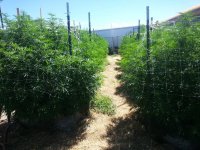ChasingGreen
Member
I leave them both...I wish I had so many fan leaves that some got totally blocked...never seen it
Check my album, all my plants do it. Are you growing stretchy sativas with the light really far away or something? Maybe because this is CFL it's more of an issue?





